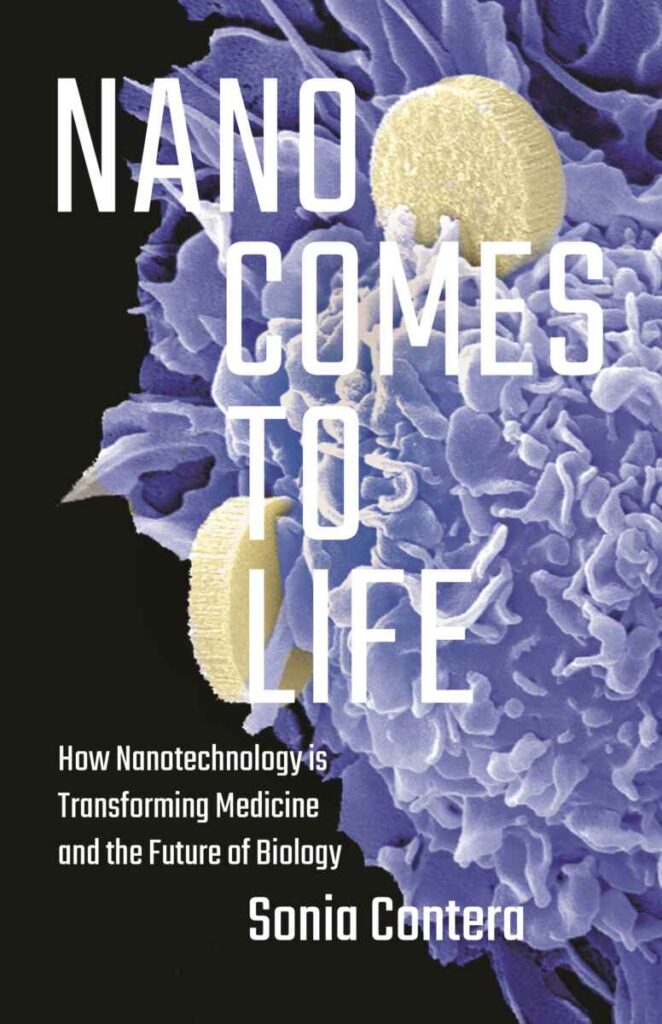
Nanotechnology will transform our lifes, our economy, our future. The book of the Oxford professor of biological physics, Sonia Contera, Nano Comes To Life: How Nanotechnology Is Transforming Medicine and the Future of Biology (Amazon.com, Amazon.co.uk, Amazon.de, Amazon.fr), explains why and how.
Nanotechnologies allow scientists to visualize, interact with, manipulate and create matter at the nanometer scale. Nanotechnology can manipulate the building blocks of life and, therefore, life itself because proteins and DNA are nano-size.
According to Sonia Contera, health and longevity will be affected. Nanoscale machines can target individual cancer cells and deliver drugs more effectively. Nanoantibiotics can fight resistant bacteria and makes it possible to engineer tissues and organs for research, drug discovery and transplantation.
Nanotechnology directly links the macroscopic world of our perceptions with the nanoscopic world of individual biomolecules. To restore humans to perfect health, we would need to know how molecules work in a specific environment, why and how they malfunction in a desease and who to reach them, target them, deactivate or activate them. To cure, we need to go from the macroscopic size of the doctor to the nanometer scale of biomolecules. Sonia Contera’s book tries to show how far we have come so far.
Nanotechnology has attracted physical scientists to biology. In the last decades of the 20th century, artificial nanomaterials and the tools of nanotechnology came into existence. Physcial scientists sought to know how and why biology first constructed itself using nano-size building blocks in the medium of (salty) water. The coupling of physics and chemistry give rise to biological function. Scientists focused on using nanotechnology’s methods to learn the workings of proteins, DNA and other important nano-size biomolecules. They became biological physicists. Others, more practical, saw opportunities to design nanomaterials that could be used to address disease, improving on current pharmacological treatments; they became nanomedicine scientists.
Cross-disciplinary activity led to the development of tools specifically built for studying biological processes and their nano-actors in physiological conditions. Nano-bioscientists eroded the boundaries between materials sciences, physics, chemistry and biology.
The last decades saw the emergence of quantitative biology. Physicists try to create mathematical models of biological processes. They try to predict the behavior of specific biological processes in the computer (in silico), without experiments. This shall allow to progressively abandon the trial-and-error methods of the traditional biological, medical and pharmacological sciences which are slow, costly and often lead to inefficient new drugs.
Biological physics, the help of algorithms, the analysis of biological “big data” and AI will lead to increasingly (more) accurate and “smart” models of life. However, knowing the workings of the building blocks (of life) is not enough to predict the behaviour of the whole: at larger scales, biology exhibits behaviors that the smaller constituents do not exhibit, or that cannot be explained from the relationships between their molecular building blocks. Sonia Contera explains that this is because complexly organized matter presents collective phenomena arising from cooperative interactions between the building blocks (these properties emerge). Examples are cellular movements, mechanical vibrations in the brain, electrical signaling across the membranes of cells, changes in the shape or stiffness, none of which can be predicted from just knowing the molecules that constitute a particular structure. For instance, nanotechnology would allow simultanously targeting the molecular, the cellular and the issue-level biology of a tumor.
Biology, mathematics, physics and engineering sciences used in nanotechnology will radically change, the way we find, interpret and treat disease. Nanotechnology will transform biology and medicine. Sonia Contera explores the complexity of biology, the birth of DNA technology, DNA nanorobotics, nanomedicine, recreating tissues and organs, addresses issues such as fear of technology, technology and equality. These are just a few take-aways from this substantial book written for non-specialists.
The author writes that we as human beings have no other choice than to mature to become “part of the whole” in a physical, economic and social sense. We have to advance into the construction of a new relationship with nature that allows our survival.

Sonia Contera: Nano Comes To Life: How Nanotechnology Is Transforming Medicine and the Future of Biology. Hardcover, Princeton University Press, November 2019, 216 pages. Order the book, the source for this article, from Amazon.com, Amazon.co.uk, Amazon.de, Amazon.fr.
For a better reading, quotations and partial quotations in this book review are not put between quotation marks.
Book review added on February 14, 2020 at 16:14 German time.